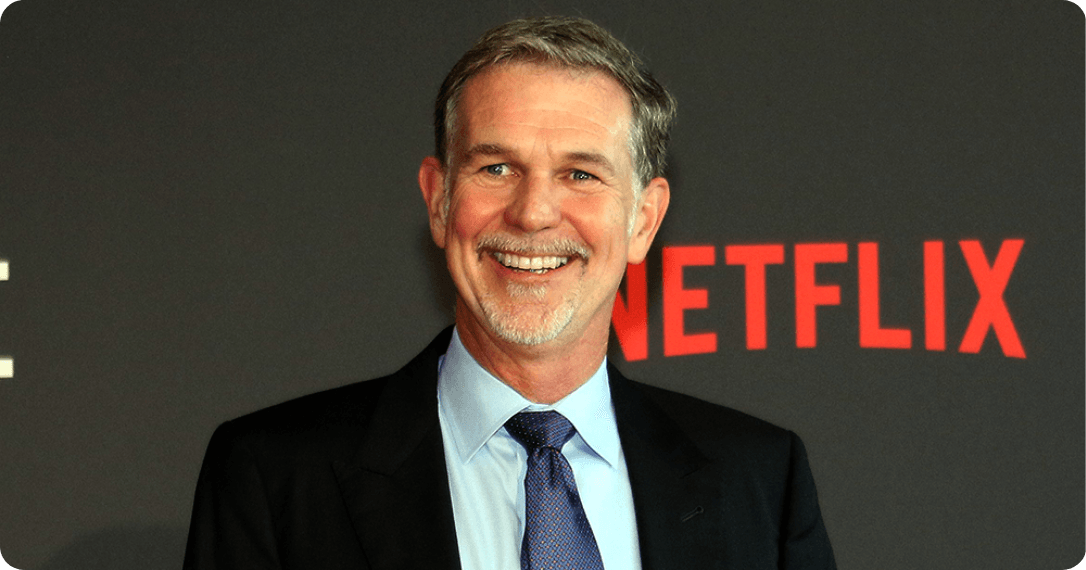

How to Lead a Team: Practical Skills for Real Leadership

24 April, 2025
Share this article
Table of Contents
Over the years, I’ve worked with all kinds of leaders. Some were inspiring. Others... not so much. One of the first things I learned is that having a leadership role doesn’t automatically make you a good leader. It takes more than a title to guide people well. You need to earn trust, show up in difficult moments, and stay on top of things without becoming a micromanager or turning into that kind of boss people avoid: controlling, cold, or disconnected.
Leadership for team is not about being the loudest in the room. It is about showing up, setting expectations early, and creating an environment where people can do good work together. When communication is clear, trust builds naturally. And when decisions are thoughtful and consistent, teams move forward with more confidence and less friction.
In this article, I’m looking at what makes that kind of leadership possible:
- Core skills like communication, motivation, and emotional intelligence
- Clarity around goals, expectations, and how to keep teams aligned
- Adaptability in how you lead, depending on the team and situation
- Trust and collaboration, built through consistency and shared purpose
Leadership has many forms. But the rules behind it are the same.

Satya Nadella – CEO of Microsoft, recognized for reshaping the company’s leadership culture by promoting shared accountability, empathy, and alignment across teams
Core Skills Every Team Leader Needs
Great team leadership starts with a few core skills. They may sound simple, but in practice they make all the difference. These are the things that influence how you lead, how your team responds to you, and how everyone works together when things get busy or uncertain. And no, being the one who brings snacks to the meeting doesn’t count as leadership, though it does help if those are macarons and coffee :)
Core skills are:
- Communication
- Motivation
- Decision making
- Emotional intelligence
Communication skills come first. It means being clear about goals, priorities, and feedback, but also knowing when to listen. A strong leader creates space for honest conversations, makes feedback part of the rhythm, and helps everyone stay aligned.
Motivation looks different for each person. Some care about impact. Others want recognition, growth, or more autonomy. Your job is to understand what matters to each teammate and connect their work to something meaningful. That is when people take real ownership.
Decision making looks simple from the outside, but it is one of the hardest things to get right. Some decisions need speed. Others need input. And almost all of them come with trade-offs. Your job is to know when to act, when to listen, and when to hold your ground. That is what helps a team move forward with clarity and trust.
A good leader:
- Acts quickly when needed. There is a difference between taking a decision now or tomorrow, not only for your waiting team, but more importantly for your business.
- Involves others when the decision affects them. Unsure? Ask for input. It shows respect and helps you see other perspectives, which often leads to better outcomes.
- Stands by the outcome and learns from it. You are responsible for your own decisions, even when they do not play out as expected
For example, say a deadline shifts and you need to reassign tasks fast. You make the call, explain the why, and follow up with the team to check how it landed. Maybe it worked, maybe it did not, but you owned it and that builds trust.
And then there is emotional intelligence, the steady base behind it all. It is about knowing yourself, reading the room, and staying grounded under pressure. People watch how you react. Your energy sets the tone more than you think.
When these skills work together, trust builds naturally. Communication flows. Motivation grows. And the team moves forward, not perfectly, but together. Just don’t expect everyone to agree on where to order lunch.

Daniel Ek – CEO of Spotify, praised for setting a strong product vision and aligning teams around clear, measurable goals.
The Importance of Clear Goals and Expectations
Clear goals are one of the most powerful tools a team leader can use. When everyone knows what they are working toward and why it matters, they can focus, collaborate, and make better decisions. Imagine you had no goals in your role. How would you feel? Probably a bit lost, a little frustrated, and jumping between ten tabs without finishing a single thing.
The best goals are simple, realistic, and measurable. They answer a few key questions. What are we trying to achieve. By when. How will we know we did it well. And just as important, what should come first. Not everything is equally urgent or equally important. A clear set of priorities helps people apply the 80/20 rule—focus on the small number of things that really move the work forward, instead of spreading energy across tasks that only feel busy.
A good leader also connects team goals to the bigger picture. When people understand how their work fits into the company’s vision, motivation shifts. The task is no longer just a task. It becomes part of something that matters.
Setting expectations is not only about results. It is also about how the team works together.
- What does good work look like
- Who is responsible for what
- How do we handle setbacks or changes
And while accountability matters, it is not about micromanaging. It is about being present, checking in, and helping people stay on track. Teams do not need someone watching every move. They need someone who is paying attention and ready to step in with clarity and support.

Reed Hastings – CEO of Netflix, known for building a high-performing, aligned leadership team.
Leadership Styles and When to Use Them
There is no fixed or predefined way to lead a team. The best leaders know how to adjust their style depending on the context, the people involved, and what the situation really calls for.
A few common styles you might use:
- Transformational leaders focus on change and growth. This style often fits in startups, creative industries, or fast-scaling companies
- Democratic leaders involve the team in decisions. You will often find this approach in NGOs, education, or research-driven environments
- Servant leaders put the team first. It works well in people-first cultures like healthcare, customer service, or social enterprises
- Autocratic leaders take quick decisions on their own. This style can be necessary in high-pressure industries like manufacturing, emergency services, or the military
The point is not to stick to one style no matter what. Leadership needs to shift depending on the situation. Sometimes you need to be more firm. Other times you need to lead with empathy. It is perfectly fine to occasionally show that you are upset about something, as long as you express it clearly and respectfully. People do not need perfection from you. They need honesty and direction. A good leader knows when to switch gears and is not afraid to do it.
Say you are launching a product under pressure. A more direct, fast approach might work best in that moment. But once the deadline passes, coming back to a collaborative style helps restore trust and balance.
Leadership is not fixed. It is a mix of awareness, flexibility, and care.

Tim Cook – CEO of Apple, famous for quietly building a collaborative leadership culture at Apple based on trust and shared values
Building Trust and Fostering Collaboration
Trust is the foundation of any strong team. Without it, collaboration feels forced and progress slows down. As a team leader, building trust starts with what you do every day. Being consistent, reliable, and clear in how you show up. And no, just replying to emails with “noted” does not count as clarity.
People notice when you follow through. They also notice when you do not. Over time, consistency builds credibility. It shows your team that you mean what you say and that they can count on you. But trust is not built only through what you say. It is also shaped by how you act.
Leading by example is just as important. If you ask for openness, be open yourself. If you expect accountability, show what that looks like. Teams tend to follow the tone you set, especially when things get difficult.
Trust also grows in spaces where people feel safe to speak up. Make room for honest conversations. Ask questions. Listen. When people feel heard, they are more likely to take ownership and work together, not just in good times but when it matters most.
Sometimes, building trust means sharing decisions too. It doesn't mean turning every step into a group vote. But involving the team where it makes sense helps people feel respected and included.
And do not underestimate what happens outside the usual flow of work. Casual conversations in a nice cafe, like the ones Pluria offers, checking in without an agenda, or simply taking time to get to know each other better builds the kind of connection that carries over into real collaboration. You can also use team building activities for leadership skills to build trust, improve communication, and see how people work together under pressure.
When trust is there, teamwork comes naturally. People step up, support each other, and solving them together. Not just because they have to, but because they want to.
Remember, you will need:
- Consistency
- Lead by example
- Honest conversations
- Team input when needed
- Real connection
- Trust

Howard Schultz – CEO of Starbucks, known for rebuilding Starbucks culture by addressing internal conflicts head-on.
Handling Conflicts and Challenges
Even the best teams deal with conflict. It is normal and often a sign that people care. Put five smart people in a room with strong opinions and one shared document, and something is bound to happen. But how a team leader handles those moments makes all the difference.
Most conflicts come from a few familiar places. Unclear roles. Misaligned goals. Communication that does not land. Or just everyday pressure that builds up. A strong leader does not ignore tension. They notice it early and make space to talk about it.
This is where emotional intelligence matters. Staying calm, listening without judgment, and understanding what is happening beneath the surface helps resolve things before they escalate. People want to feel heard, not managed.
When conflict shows up, shift the focus from blame to problem solve. You can ask:
- What is the real issue here
- What do we each need to move forward
- What would a fair solution look like
Working through conflict together builds more than resolution. It builds trust, resilience, and a better way of working as a team.
And sometimes, the hard moments are the ones that help you grow. Maybe a project failed. Maybe a conversation got uncomfortable. As a leader, naming the learning and helping the team reflect can turn frustration into momentum.
You do not need to fix everything. You just need to stay steady and show your team that you will work through it together.

Brian Chesky – CEO of Airbnb, recognized for surrounding himself with strong, trusted leaders and maintaining tight alignment during both rapid growth and crisis moments.
Creating an Effective Leadership Team
Leadership is not a solo job. Behind every strong team is a group of leaders who know how to work together, share responsibility, and stay aligned. When the leadership team is connected and collaborative, everyone feels the difference.
Collaboration at this level sets the tone for the whole organization. If leaders are out of sync or working in silos, teams feel it. But when they communicate clearly, support each other, and move in the same direction, it creates trust and stability across the board.
A strong leadership team:
- Shares responsibilities based on strengths and trust, without stepping on each other’s roles
- Meets regularly to communicate openly, align priorities, and address what is not working
- Reinforces the same messages and values in their own teams, so people get clarity, not confusion
- Checks in with each other during challenges and offers support instead of blame
Sharing leadership is about making space for different views and having each other’s backs. You do not need to agree on everything, but you do need to stay aligned and present for one another.
Alignment is not just about strategy. It is also about tone and presence. If one leader encourages autonomy while another is more hands-on, that can work—as long as it is intentional and the context is clear. But when those differences are random or unspoken, the team ends up confused. What you say matters, but how you lead matters just as much.
An effective leadership team is not just a bunch of people with fancy titles and matching mugs. It is a group that actually talks to each other, backs each other up, and knows when to step in or stay out of the way. When that clicks, teams stop playing “guess what leadership wants this week” and start getting real work done.

Sundar Pichai – CEO of Airbnb, respected for his calm presence, thoughtful leadership, and ability to read people and situations.
Tips for Leading with Emotional Intelligence
Emotional intelligence is one of the most important traits a team leader can develop. It helps you understand people, respond instead of react, and lead with clarity even when things get messy or uncomfortable. Unfortunately, it is not included with your first promotion, even though it probably should be.
Good leadership starts with awareness. Of yourself and of others. That means noticing how you show up and how your team responds. Are people quiet or open. Energized or low on motivation. These things say a lot about how the team is doing, even before anything is said out loud.
It also helps to ask, not just observe. Check in from time to time and see how people actually feel. Not everything shows up in meetings or task updates. A simple question like how are you can go a long way, especially when it comes from genuine interest, not small talk.
In some cultures, like in Colombia, it is the norm to start every conversation this way. In others, especially across parts of Europe, people tend to get straight to the point. Neither is right or wrong. But as a leader, it helps to notice these differences and be willing to adapt. A bit of warmth never hurt anyone.
Here are a few ways to lead with emotional intelligence:
- Notice emotional cues and check in when something feels off. Try asking “Hey, you seemed a bit quiet in that meeting; everything okay?”
- Practice empathy, even when holding people accountable. You might say “I know this deadline was tough. Want to talk about what made it hard?”
- Stay calm and grounded during stressful moments. Ask “What would help most right now?” instead of jumping straight into solutions
- Make space for emotion, but stay focused on decisions that move things forward. Try “I hear you, and this matters. So what do you think is the next step?”
Empathy does not mean saying yes to everything or lowering standards. It means understanding where people are coming from while still being clear about what needs to happen. The best leaders know how to support and challenge in the same breath.

Daniel Dines – Co-founder and CEO of UiPath, Romania’s first unicorn, a strong example of leadership for team at scale, built on clarity and shared values.
Conclusion
Strong leadership comes down to a few essentials. Clear communication. Smart decisions. Emotional intelligence. Some of the best leaders, like Jacinda Ardern, Satya Nadella, or Angela Merkel, lead with calm, clarity, and consistency. They do not panic in hard moments, and they do not pretend to know everything. And no, wearing a hoodie like Zuckerberg does not automatically put you in this category.
But leadership is not static. It is something you grow into, with time, reflection, and a bit of discomfort now and then. As your team changes, your role will change too. In the end, leadership is less about control and more about connection. And when you grow, your team grows with you.
Remote work
Keep up to date with our most recent articles, events and all that Pluria has to offer you.
By subscribing to the newsletter you agree with the privacy policy.

In the last two years I’ve been working remotely from over 20 countries but no part of the world compares to Latin America: countries and cultures spreading over two continents with climates[...]
04 December, 2023

A massive move to hybrid work
In 2022, 60% of companies will switch to a hybrid working model, and a third of them will fail on their first attempt to work from anywhere, Forrester p[...]
04 December, 2023

When the employees in the most innovative company on the planet rally against their CEO because he wants them back in the office three days a week, it is a sign that it is not enough to be innovative in tec[...]
04 December, 2023